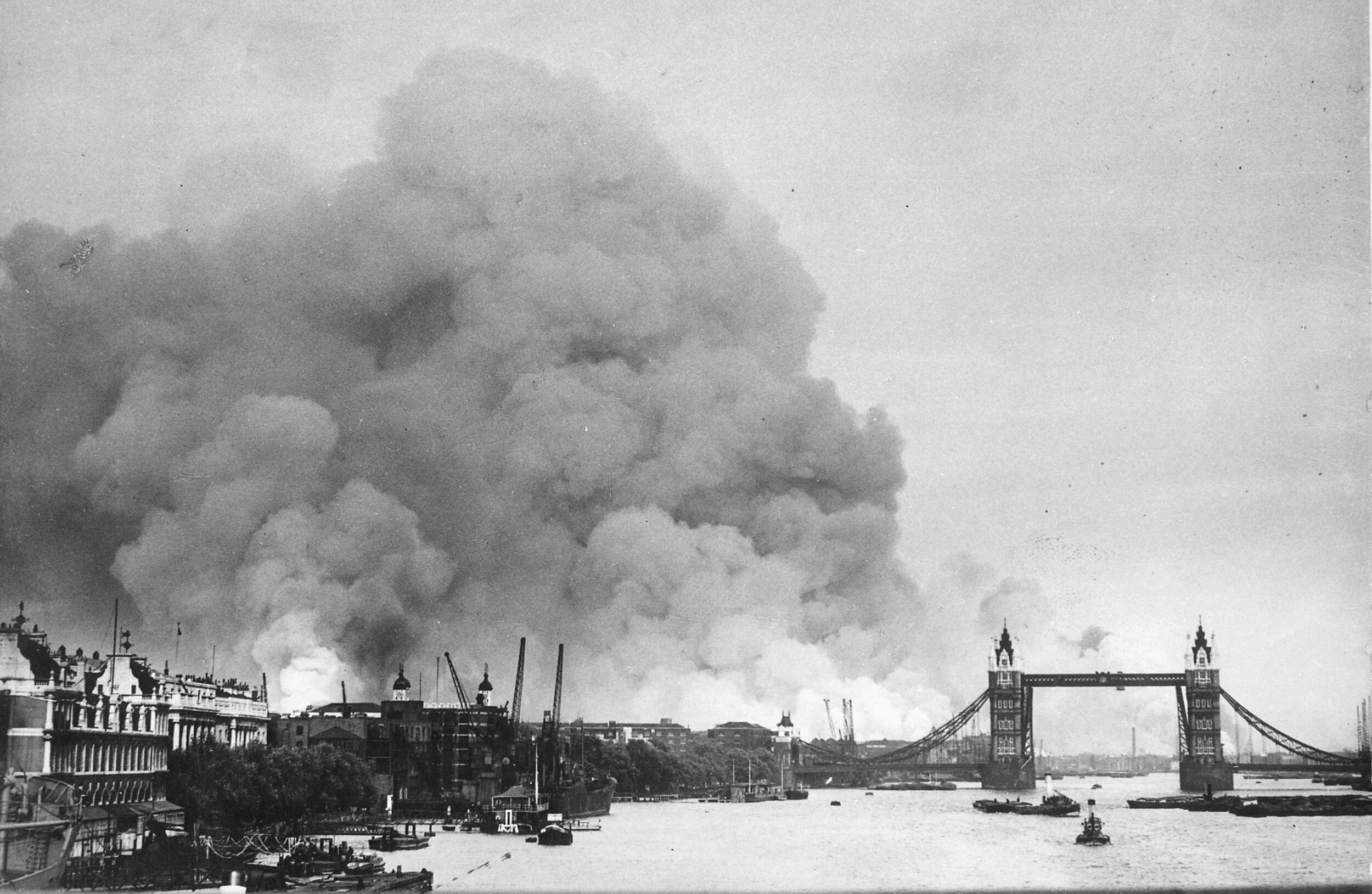The Battle of Britain
Airplanes were certainly used in the First World War, but planes as weapons of war took on new roles during WWII. Developments in aviation in the interwar years allowed for planes to fly faster, farther, and carry heavier loads than in the previous conflict. Strategic bombing was practiced during WWI, but during the Second World War it was a major tactic. Bombing during WWII had two main targets: strategic targets, like munitions factories, air strips, and harbours; and civilian targets, like major cities. The intention behind hitting strategic targets was to limit the ability of an enemy nation to supply and perform acts of war; the latter was a direct attack on the morale of one’s enemies. There are infamous attacks on Allied centres, like the Blitz; however, the Allies also participated in civilian bombing. The devastating bombing of Dresden, Germany in February 1945 is one example. Such significant threats to civilian populations on the home front is one reason why WWII was considered a “total war.” This blog series will look at civilian bombing during the Battle of Britain, a few popular types of air raid shelters, and how the Canadian government prepared civilians for the potential of an air raid.
German troops entered Paris on June 14, 1940. On June 22, France surrendered and signed an armistice with Germany. For Britain, this was the final confirmation that this war would not be like the First World War and that their island may be under direct threat of German invasion. Immediately following the fall of France, Hitler believed that Britain would also request a peace treaty rather than fight the German war machine. However, British Prime Minister Winston Churchill was not willing to acquiesce to Hitler’s demands and he famously told the British and other Allies that “The Battle of France is over. The Battle of Britain is about to begin.”
German troops were unprepared for a land invasion of the British Isles in 1940. Before they could land on the shores, Germany had to have control over the seas, and before they could claim naval superiority, the Luftwaffe (German air force) had to control the air. Thus, the Battle of Britain began as a battle in the skies.
SMOKE RISING FROM FIRES IN THE LONDON DOCKS, FOLLOWING BOMBING ON 7 SEPTEMBER, 1940. BY NEW YORK TIMES PARIS BUREAU COLLECTION. IMAGE COURTESY OF WKIMEDIA COMMONS.
German attacks began on July 10. In the first phase of the battle, which lasted a month, the targets were convoys on the English Channel, channel ports, and radar stations along England’s south coast. As the battle progressed attacks moved farther inland. In the second phase, widely considered the main assault, attacks were directed at radar stations, airfields, and aircraft factories. Germany was trying to take out Britain’s ability to maintain the Royal Air Force (RAF). Though the Luftwaffe was taking more losses, Britain was losing experienced pilots at a rate that could not be sustained. However, in August 1940 a German bomber, reportedly by accident, dropped bombs on civilians in London. Britain responded by bombing Berlin. This changed the course of the Battle of Britain.
Angered by the attack on Berlin, Hitler ordered the target of German bombs to shift from militarily strategic locations, like airfields and factories, to civilian populations. Thus ‘the Blitz’ began on September 7, 1940. London was bombed for 57 consecutive nights. Still, the Blitz was an attack on the entirety of Britain, and London was not the only urban centre that was bombed. After the bombing raids on London, major provincial cities and industrial centres were still targeted. Bombings ended around May, when Germany shifted its focus east to the Soviet Union. By the end of the nine months of bombing over 43,000 civilians were killed.


